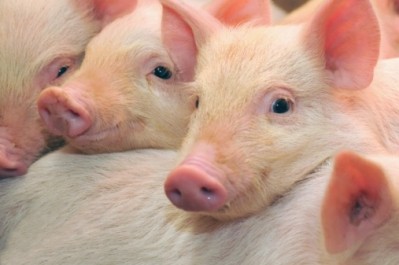Q&A with AHDB Pork analyst

To ascertain why the sector’s value is falling, and for how long the industry can expect to experience a decline in its value, GlobalMeatNews spoke to AHDB Pork’s senior analyst Vikki Campbell.
The pork analytics specialist discussed Russia’s trade ban, China’s economic slowdown and the UK’s referendum on its membership with the EU. She also spoke about market volatility, why Spanish pork won’t take a siesta, and how the UK pork sector can capitalise on the pound’s weakening value against the euro.
GMN: Pork prices are at their lowest level in eight years – how long will the pressure on the market continue?
Vikki Campbell: “Pork prices are at their lowest levels for almost eight years. However, in the last couple of weeks, this rate of decline has started to slow. The EU-spec SPP [Standard Pig Price] for the week ending 27 February 2016 fell by only -0.15p to 112.17p/kg, which was the smallest week-on-week decline since November 2015.
“This was the third consecutive week of only a very modest decline, so inferences may be made that the bottom of the market may now be close, helped by demand kicking in for the Easter period. Coupled with this, spot prices have also stood-on for another week, providing further indications of a price stabilisation. However, market conditions for 2016 look very similar for 2015, so we would expect prices to remain under pressure going forwards. There are some indications of an EU-led price recovery later on in the year, but the pace, scale and timing of this is, as yet, uncertain.”
GMN: Pork seems to be struggling globally – are there any countries that have had a good year?
Vikki Campbell: “The pork market is under pressure both in the UK and EU. The pig censuses have been published for the majority of member states, and the overall theme is a reduction in the breeding herd, which will lead to tightening of supplies later on in 2016. However, Spain has bucked this trend, and both the total pig herd and breeding herd grew in 2015 (7% and 5% respectively). However, as with other member states, the value of Spanish pork has remained under pressure in order to stay competitive in the marketplace.
“The US is forecast to have an upturn in fortunes in the second half of 2016. Surprisingly strong domestic consumer demand has helped lay the groundwork for improving market conditions, coupled with a shift in the net trade balance towards fewer imports and greater exports. However, 2015 saw low prices exacerbated by over-supply issues. Global pork prices all came under pressure in 2015, as the lift they saw in 2014, following the 2014 outbreak of PEDv [porcine epidemic diarrhoea virus] in the US and Canada was mitigated by supply increasing over this time period to capitalise on the higher pork price. The Russian Federation saw a strong growth in the pace of pork production in 2015 (4.2%), with large commercial plants growing their pig herds at the expense of smaller backyard producers. However, producers are experiencing downwards pressures on margins due to the ongoing economic crisis in Russia and competition from low world prices on pork. Imports are set to decline further because local pork production is growing, and Russia is aiming to be self-sufficient for pork by 2020.”
GMN: Has China’s economic slowdown had any impact on pork prices?
Vikki Campbell: “After three consecutive years of contraction, Chinese swine inventories are forecast stable in 2016 as lower feed costs and higher pork prices spur a slight increase in sows and improved efficiency (pigs per sow and industry consolidation). However, Chinese pork production will remain flat as a decline in slaughter offsets heavier weights. 2015 was an exceptional year for exports to China, and we can expect 2016 volumes to maybe not reach the same levels. However, there is no indication as of yet that the Chinese economic slowdown has impacted the global pork price.”
GMN: With Britain’s EU referendum looming, will this create uncertainty for pork producers?
Vikki Campbell: “Currently, the referendum is creating volatility on the currency markets, with the pound weakening against the euro. This has a potentially beneficial effect for GB producers, as it will make GB pork more competitive on both the domestic and export market. With regards to a wider uncertainty, there are the well-documented concerns of GB producers, but it is harder to measure a response for European counterparts.”


























